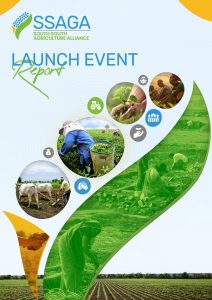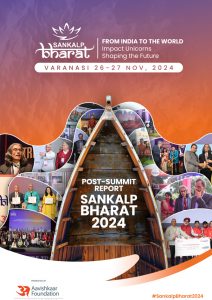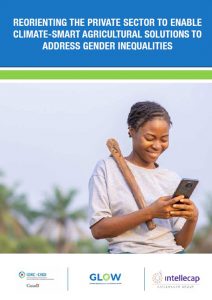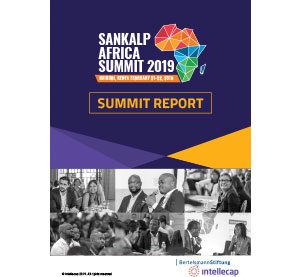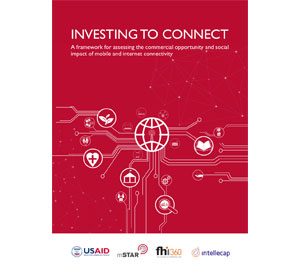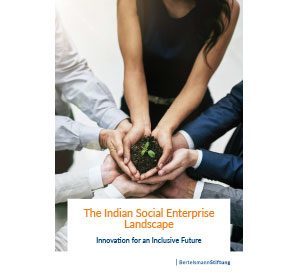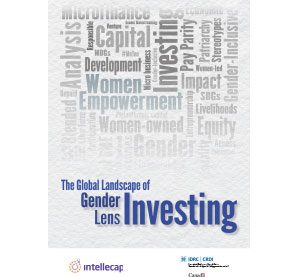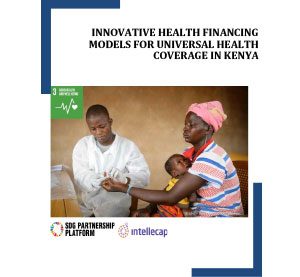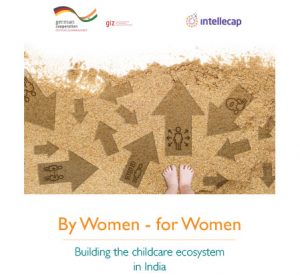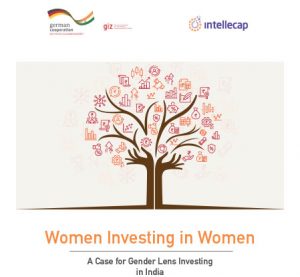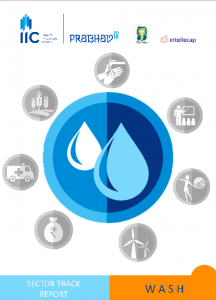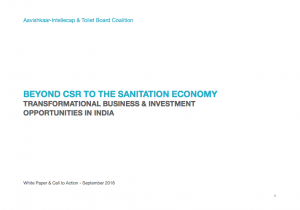TRENDING
-
SSAGA – Benefitting small-scale farmers by fostering innovations and collaboration across the Global South
Published: March, 2025 -
Sankalp Bharat 2024-Post Summit Report
Published: March, 2025 -
Reorienting The Private Sector To Enable Climate-smart Agricultural Solutions To Address Gender Inequalities
Published: February, 2025
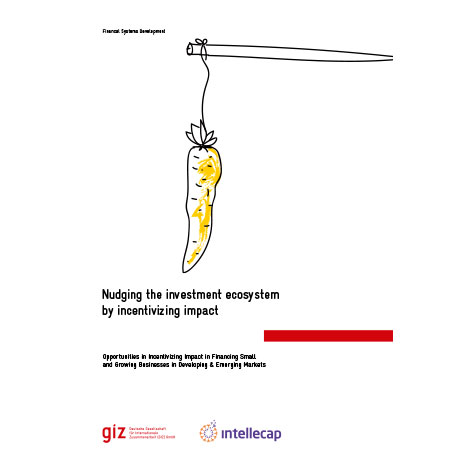
Nudging The Investment Ecosystem By Incentivizing Impact
PUBLISHED: June, 2018
Opportunities in Incentivizing Impact in Financing Small and Growing Businesses in Developing & Emerging Markets
This paper is a summary of fresh ideas on how to channel more capital into impact investing and incentivize impact creation. Building on insights generated by experts at the BMZ hosted conference Financing Global Development – Leveraging Impact Investing for the SDGs, the paper furthers the conversation on Impact Measurement and Management, IMM 2.0, through brainstorming practical ideas and viewpoints in the impact investing value chain: those who provide capital, those who manage it, and those who receive it. This included close to 50 stakeholders, including fund managers, DFIs, intermediaries, entrepreneurs, governments, CSOs and others.
The discussion, conducted in the form of a ‘design lab’ by Deutsche Gesellschaft für Internationale Zusammenarbeit (GIZ) GmbH, Intellecap, and the Swiss Agency for Development and Cooperation (SDC), aims to start a conversation on how to maximize impact by channeling capital into small and growing businesses (SGBs) as a way to expedite achievement of SDGs (Sustainable Development Goals). During the session, industry leaders like FMO, Vox Capital, and Roots of Impact had shared case studies of good practices in incentivizing impact along the investment chain. This formed the basis of brainstorming on development of new ideas on innovative instruments that could nudge the ecosystem towards more actively pursuing and scaling impact.
The result is an analysis of the barriers in the impact investment value chain highlighted during the stakeholder conversations, and key insights on how to overcome them (for example, the need for transparency, standardization, leadership, etc.). In addition, the workshop collated a list of potential ‘wild ideas’ to like impact currency, impact rewards, impact index, online market places for impact auctioning, and a give-back distribution impact support system, designed to incentivize increased levels of investment along the value chain. The practical approaches suggested by stakeholders fit well with the existing impact measurement and monitoring frameworks like GIIN’s IRIS and Intellecap’s PRISM and hold the potential to guide impact capital more efficiently by leveraging good practices.

The Financial Lives of Government Employees – Potential of Digital Finance in Sierra Leone
PUBLISHED: July, 2018
This report documents findings from research on the financial lives of government employees in Sierra Leone, commissioned by the Government to People Payments Project – Building Digital Ecosystem funded by USAID. Intellecap supported UNCDF, Government of Sierra Leone and Bank of Sierra Leone for conducting the research.
There are 80,000 government employees in Sierra Leone who receive salaries digitally in their bank accounts. Insights about their financial lives can help build a viable business case for DFS to expand access to a wide range of financial services for underserved communities in Sierra Leone. Such insights can inform strategies and use cases that the UNCDF and the Government of Sierra Leone can develop to promote DFS in the country. The National Strategy for Financial Inclusion 2017 – 2020 also refers to the need to identify and digitize use cases that will lead to habitual usage, and achieve Sierra Leone’s commitments to the ‘Better Than Cash Alliance’.
Recognizing the need and opportunity, UNCDF supported the Financial Lives Survey of government employees who receive their salaries digitally in Sierra Leone. Intellecap designed the survey to understand how government employees utilize salaries transferred into their bank accounts, their awareness of and access to DFS, avenues to use them and their perceptions about financial services and digital financial transactions. This report contains insights from the survey about potential customers of DFS and recommendations on use cases that could be piloted as an initial step to improve DFS adoption in Sierra Leone.
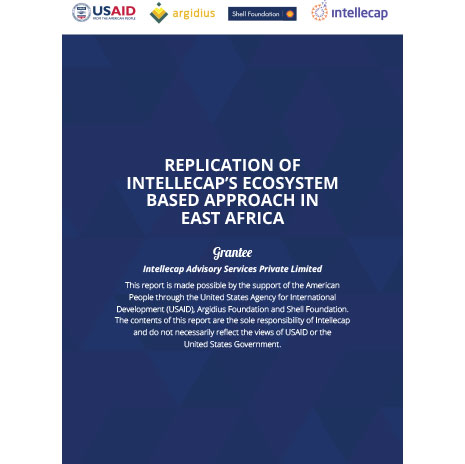
Replication of Intellecap’s Ecosystem Based Approach in East Africa
PUBLISHED: July, 2018
Intellecap has sought to replicate its ecosystem-based approach to East Africa by bringing
together capital, knowledge and networks to support SGBs at two levels: (i) provide direct support
to SGBs in the form of acceleration, fund-raising, technical assistance, innovation transfer, and
market linkages, and (ii) discover and engage critical ecosystem players such as corporations
(both local and international), accelerators, other development sector players in supporting SGBs.
In the three-year period since the launch of our initiative to replicate our ecosystem-based
approach for accelerating entrepreneurship support to SGBs in East Africa, we have received
generous support not only from our funders, but also from a number of local and international stakeholders such as development institutions, private sector entities, and industry associations.
Over the last year, we have replicated our advocacy platform (Sankalp), angel investment network
(I3N) advisory services (consulting & investment banking), virtual incubation platform
(StartupWave) and impact measurement platform (PRISM) as envisaged at the beginning of our
programmatic support. The development and adaptation of StartupWave for East Africa has
resulted in over 450 sign-ups for our early stage enterprise support activities and partnerships with
over 30 incubators / accelerators. Similarly, PRISM, our impact measurement platform, has
garnered interest from a wide variety of players to measure the impact of their programs.
All Publications
-
Innovative Health FInancing Models for Universal Health Coverage in Kenya
PUBLISHED: February, 2019READ MORE -
Women Investing in Women: A Case for Gender Lens Investing in India
PUBLISHED: December, 2018READ MORE -
Beyond CSR To The Sanitation Economy Transformational Business & Investment Opportunities In India
PUBLISHED: October, 2018READ MORE -
Laos, School Feeding Programme (2014-2016): an endline evaluation
PUBLISHED: October, 2018Tags: NRMCREAD MORE
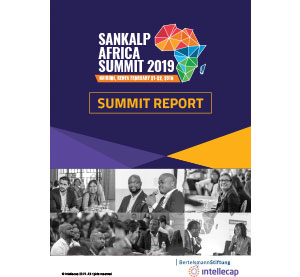
Sankalp Africa Summit 2019 | Post Event Report
PUBLISHED: April, 2019
The entrepreneurial ecosystem in East Africa is young, and incredibly active. Yet, it is fraught with challenges that entrepreneurs face on a daily basis as they launch their businesses. The landscape in East Africa validates the ‘ecosystem approach’ that Intellecap takes – bringing together Capital, Knowledge and Networks. These three factors are inextricably linked and critical for the success of any entrepreneur – seasoned or young.
Sankalp Forum is a multi-stakeholder platform focused on growing the entrepreneurship economy in emerging markets by channeling support to entrepreneurs and innovators. The Sankalp team has successfully organized 6 regional summits in Africa with 1100+ delegates attending the latest edition including government leaders, corporations, investors, entrepreneurs and innovators. Launched in 2014, the annual Sankalp Africa Summit intends to support the regional SME ecosystem and build a transfer corridor with other emerging markets in the Global South. Entrepreneurs remain at the core of Sankalp Forum, and each year through the Sankalp Awards, we source, screen, and support high potential enterprises in their capital raise.
As the entrepreneurship agenda gains popularity from an ever-increasing base of stakeholders, and the space gets more crowded, these stakeholders and the entrepreneurs they support begin to rub shoulders and step on each others’ toes without even knowing it. Many stakeholders have commonalities and overlap in their entrepreneurship agendas, but may never realize it. How effectively are such programs delivering value to entrepreneurs, customers, and beneficiaries? How much redundancy could be alleviated if these stakeholders worked together instead of in parallel? What efficiencies could be improved by aligning agendas across different stakeholders? What insights could be gained from seasoned veterans in the space, like impact investors, accelerator programs, and entrepreneurs themselves?
As we continue to work towards achieving the Sustainable Development Goals, it is more important than ever that we work in tandem instead of independently to amplify each individual’s contributions. The 2019 Sankalp Africa Summit brought together all these different types of stakeholders with the objective of building an enabling ecosystem for entrepreneurship. Our upcoming Summits look forward to helping align stakeholders and provide a platform where unlikely alliances can take hold, and their collective impact can be amplified.
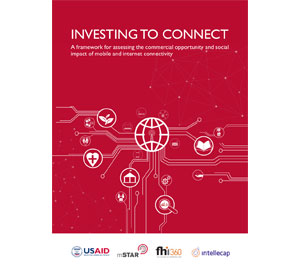
Investing to Connect
PUBLISHED: April, 2019
This white paper seeks to articulate the impacts of connectivity and propose a framework of financial, social and economic key performance indicators (KPIs) for the LMC sector, in order to ultimately drive investments in the sector. The purpose of the framework is to illuminate impact pathways that link investments in LMC enterprises to positive development outcomes. The paper builds on the existing literature pertinent to impact measurement in the connectivity sector and lays out a set of business, outcome and impact metrics that can be used by enterprises and investors to tangibly measure and articulate the anticipated commercial value and positive social impacts of connectivity.
The approach to develop this framework involved extensive research, stakeholder interviews and feedback from an expert advisory panel. Publications from a wide range of organizations and journals were reviewed as part of an extensive literature review on the impact of mobile and internet connectivity in the development context. Over 30 stakeholders with expertise in areas such as investment, technology and enterprise models related to LMC provided insights to guide the development of the framework. An advisory panel of experts reviewed a draft of the report to offer early feedback and incorporate suggestions for inclusion.
A comprehensive list of possible business performance indicators for LMC enterprises was determined, reviewed and proposed for inclusion. From this list, eight core business indicators have been identified. These indicators have been proposed on the basis of their potential to enable LMC enterprises to objectively measure performance and engage investors. In addition, a list of outcome indicators has been proposed. These outcome indicators will enable LMC enterprises to articulate the positive social impacts of connectivity. The proposed core business indicators and outcome indicators can be found in Section 4: Core Indicators. Together, these two sets of measures comprise the KPI framework referenced throughout this paper.
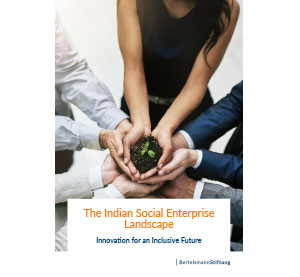
The Indian Social Enterprise Landscape Study
PUBLISHED: February, 2019
India is one of the most dynamic social entrepreneurship environments globally with an estimated two million social enterprises. A vibrant start-up community as well as sustained interest and support from impact investors in India and the world, have resulted in hundreds of projects providing access to basic services and making dramatic changes in the lives of millions of Indians.
The Bertelsmann Foundation mandated Intellecap to undertake research and develop a report that provides insights into the social enterprise landscape in India. This report focuses on seven sectors based on their contribution to the Sustainable Development Goals. The sectors are Agriculture, Clean Energy, Education, Financial Inclusion, Water, Sanitation and Healthcare. The report starts with portrayal of the social entrepreneurship ecosystem with the key stakeholders and their focus areas. Then it deep dives into the seven chosen sectors, highlighting policy initiatives as well as start-ups working on meeting the SDGs in their sector. Finally, it exhibits the key trends for the sector, from both an entrepreneur’s and an impact investor’s perspective in the coming five to ten years. Since the research is conducted for a Germany-based foundation, the recommendation section focuses on how India and Germany can cooperate to create a mutually beneficial partnership. This report will help policymakers identify key interventions, help impact investors fine-tune their sectoral focus and help social entrepreneurs tweak their value propositions.
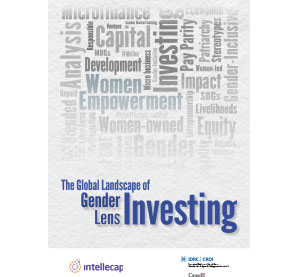
The Global Landscape of Gender Lens Investing
PUBLISHED: February, 2019
This report presents the global landscape of gender lens investing and examines the strategies used by gender lens investors across the globe. In doing so, it also examines ways in which businesses promote social and economic empowerment of women and correlates investment strategies to them. The report studies patterns and draws insights about the evolution of the gender lens investing strategies, the financial instruments used in adopting them and regions where they are implemented. It also highlights the challenges gender lens investors face in emerging geographies both in terms of raising capital and accessing an investible pipeline for the adoption of this strategy. It is notable that almost 70% of the funds using this strategy were seeded by women investors and/or raised funds from women. The report concludes with a discussion on the various aspects that need to be considered for promoting gender lens investing – especially in developing countries.
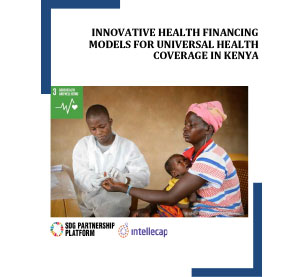
Innovative Health FInancing Models for Universal Health Coverage in Kenya
PUBLISHED: February, 2019
The whitepaper brings out the need for innovative health financing models in Kenya and how these models can work towards achievement of Universal Health Coverage. It highlights that broader approach to look beyond social impact bonds and how models like Advance Market Commitments, Asset Lease Financing can facilitate better delivery of primary healthcare services in Kenya. The white paper highlights that the Government should continue to significantly increase its budgets for health to deliver on the Country’s ambition to realize UHC, while it is tapping into other sources of financing to optimize the existing resources and bridge critical gaps.
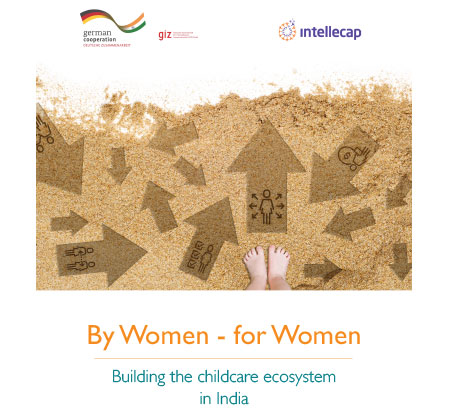
By Women – for Women: Building the Childcare Ecosystem in India
PUBLISHED: December, 2018
This report is based on the core hypothesis that heightened workforce participation by women can usher in the dual benefits of spurring India’s economic growth and strengthening socioeconomic empowerment of women. With this backdrop, the report contrasts the low and declining levels of women workforce participation in the country and highlights the complex interplay of socioeconomic barriers and challenges that contribute to this phenomenon. The report thereafter, deep dives into the specific challenges associated with lack of access to quality childcare and examines how convenient and affordable access to childcare can help women transition from unpaid labor to paid employment and in turn, socioeconomic empowerment. The report takes stock of the current state of the childcare ecosystem in India and attempts to leverage the latent market opportunity. The report concludes by articulating recommendations for implementing an integrated three-pronged approach that combines building the required policy, skilling and entrepreneurship ecosystems for childcare.
This report will be a valuable resource for a range of ecosystem stakeholders including regulatory agencies and government policymakers, development agencies, foundations, private sector companies in the capacity of employers, incubators and accelerators. It is expected to inform policy formulation and intervention design targeted at strengthening the childcare ecosystem in India.
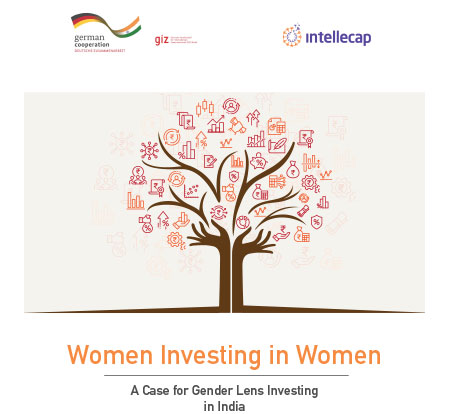
Women Investing in Women: A Case for Gender Lens Investing in India
PUBLISHED: December, 2018
Global evidence of a strong business case for investing in women and leveraging their potential as entrepreneurs is emerging. The ‘Women Investing in Women’ movement can play a significant role in addressing the systemic access to finance challenges that women entrepreneurs contend with. The report takes stock of the access to finance challenges experienced by women entrepreneurs in India and the resulting financing gap. It explores the potential of the ‘Women Investing in Women’ movement to address those challenges and enhance access to finance for women-led start-ups and small businesses. The core objective of the report is to identify a strategic roadmap for strengthening this movement in India to further the adoption of gender lens investing. This report will be a valuable resource for a range of ecosystem stakeholders including regulatory agencies and government policymakers, development agencies, foundations, private sector companies who aim to strengthen the women entrepreneurship ecosystem in India. It is expected to inform policy formulation and intervention design targeted at strengthening gender lens investing in India.
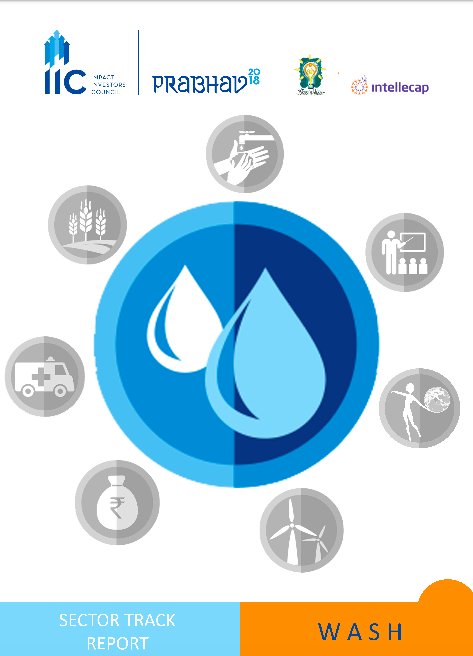
SDG 6: Clean Water and Sanitation
PUBLISHED: November, 2018
This report launched in partnership with the impact investor’s council (IIC) at an event called Prabhav in India, critically assesses the water and sanitation ecosystem for the gaps in capital support across the value chain. The report highlights the impact potential of WASH entrepreneurs and makes a case for impact investors to step in the WASH sector.
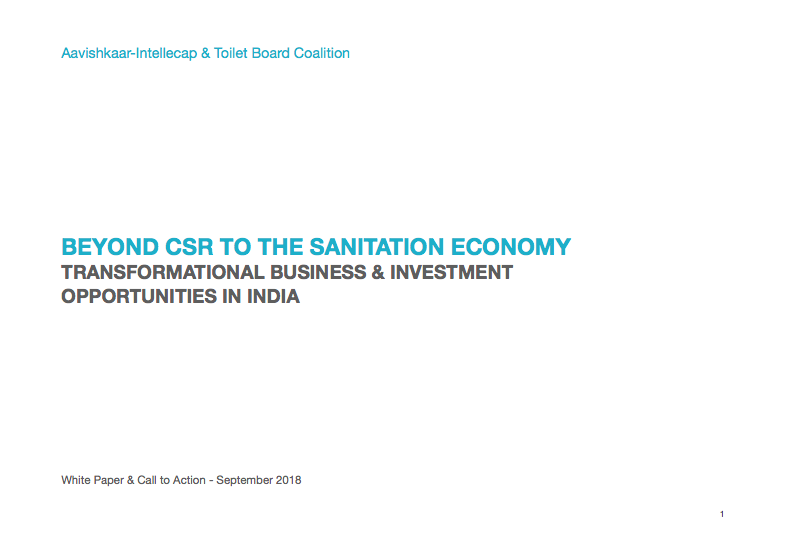
Beyond CSR To The Sanitation Economy Transformational Business & Investment Opportunities In India
PUBLISHED: October, 2018
The sustainable management of water and sanitation underpins wider efforts to end poverty and advance sustainable development. But, the world is not on track to reach Sustainable Development Goal 6 (SDG 6) on Water and Sanitation by the deadline set for 2030, says a new UN report (UN Water, 2018). The World Bank estimates that $1.14
trillion USD per year in overall global investment is needed to meet SDG targets 6.1 and 6.2, which represents a trillion dollar financing gap, and calls for a new financing paradigm that includes mobilising additional and innovative forms of domestic and international finance—a largely untapped financial resource to the sector (World Bank & UNICEF, 2017). Locally, it is estimated that India loses more than $106 billion USD per year of its GDP (> 5% of total) due to inadequate sanitation. It is widely believed that the private sector can and should fund a significant percentage of the investment gap. The private sector should not only be considered a funder but also an implementer of more efficient solutions. Companies are structured to maximiSe efficiency in order to remain profitable. As such, for companies to step into this implementation role, we must create the right enablers. This means focusing on at scale or scalable projects, establishing streamlined go-to-market models, and
creating favourable economics that attract commercial investment.
It is becoming inevitable that for sanitation systems to be sustainable and resilient for future generations, infrastructure needs to be cost recovering and services delivered in partnership with the private sector and commercial investors. The transition to the Sanitation Economy presents a transformational opportunity to
ensure a sustainable future for sanitation systems that can provide alternatives to the cost burdened systems of today, towards cost recovery and full of life-improving innovations, business and commercial investment opportunities – that could turn the outlook for SDG 6 around and ensure the resilience of India’s progress on sanitation access via the Swachh Bharat Mission. The transformation lies in the transition to significant opportunity for private sector innovation, new technologies, new sources of water, energy nutrients, and information
about human health and behaviour that will attract commercial investment and contribute to sustainable economic growth. In this model, the public sector benefits from private sector expertise, and the private sector sustainably engages in the development agenda through relevant, appropriate commercial constructs.
There is mounting evidence that leading businesses are championing new and exciting areas for business opportunity with a vision for a multi-billion dollar Sanitation Economy. To un-lock the these opportunities companies and investors need to take bold action for sanitation solutions that go beyond Corporate Social
Responsibility. We are calling on Indian businesses, entrepreneurs and investors to build the Sanitation Economy in India. Promoting high impact enterprises and achieving good returns on investments made will require sustainable on-the-ground partnerships with multiple stakeholders.
With this white paper we seek to take stock of the current state of corporate engagement in sanitation solutions, and build the case for businesses to move beyond CSR to un-lock core business opportunities that lie within sanitation systems and have been virtually untapped. Doing so will build an exciting universe of new investment
opportunities. India has the opportunity to lead the way, to address this market failure, and showcase the potential of the Sanitation Economy.

Laos, School Feeding Programme (2014-2016): an endline evaluation
PUBLISHED: October, 2018
The end-line evaluation for United States Department of Agriculture (USDA) Mc-Govern Dole Food for Education Grant supported School Feeding Programme FY14-16 award cycle (hereafter referred to as FY14) in Lao PDR was commissioned by WFP country office Lao PDR between February-June 2018.
The objective of the evaluation was to assess the implementation and performance of the FY14 award and generate recommendations that will strengthen and inform the operational and strategic decision-making for the FY17 award rollout. The evaluation served the dual purpose of accountability and learning. It assessed the performance and results of the implementation and determined the causalities towards achieving or missing the results.
The evaluation has provided an evidence-based independent assessment of the performance of the operation that would enable WFP and program partners to take informed operational and strategic decisions for the FY17 award. The evaluation methodology was guided by the ToR underpinned by the results framework of the FY14 programme. The difference in status of indicators over the programme period was examined by comparing the baseline data with that of the end-line through desk review and primary survey. Data from the primary survey was triangulated to assess its reliability. Gender Equality and Empowerment of Women (GEEW) was mainstreamed by disaggregating all school-level data by sex, and the sampling of students was done to ensure an equal representation of boys and girls. The sample was spread across seven provinces covering ten districts. 60 schools were sampled covering 1155 students from Grade 1 to 5. It also included 984 parents, 58 cooks and storekeepers, 57 school heads, and 58 teachers. Additionally, 88 qualitative discussions were also held with parents, cooks, storekeepers, school head, teachers, and Village Education Development Committees (VEDC). The survey tools were translated to Lao language for easy administration of the tools.
Reports & Policies
Our Impact Map

Sign up for our newsletter
© Copyright 2018 Intellecap Advisory Services Pvt. Ltd. - All Rights Reserved



